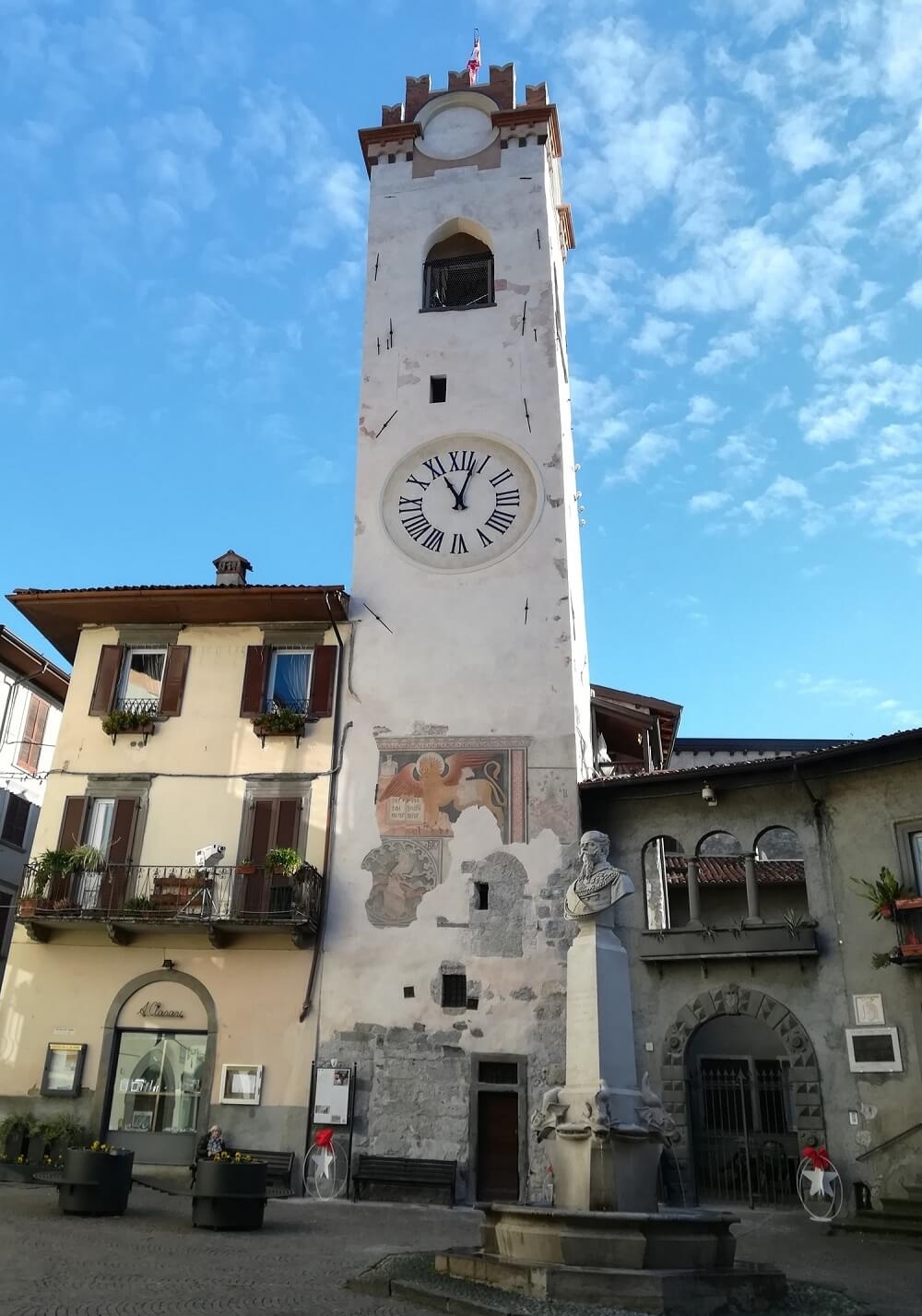

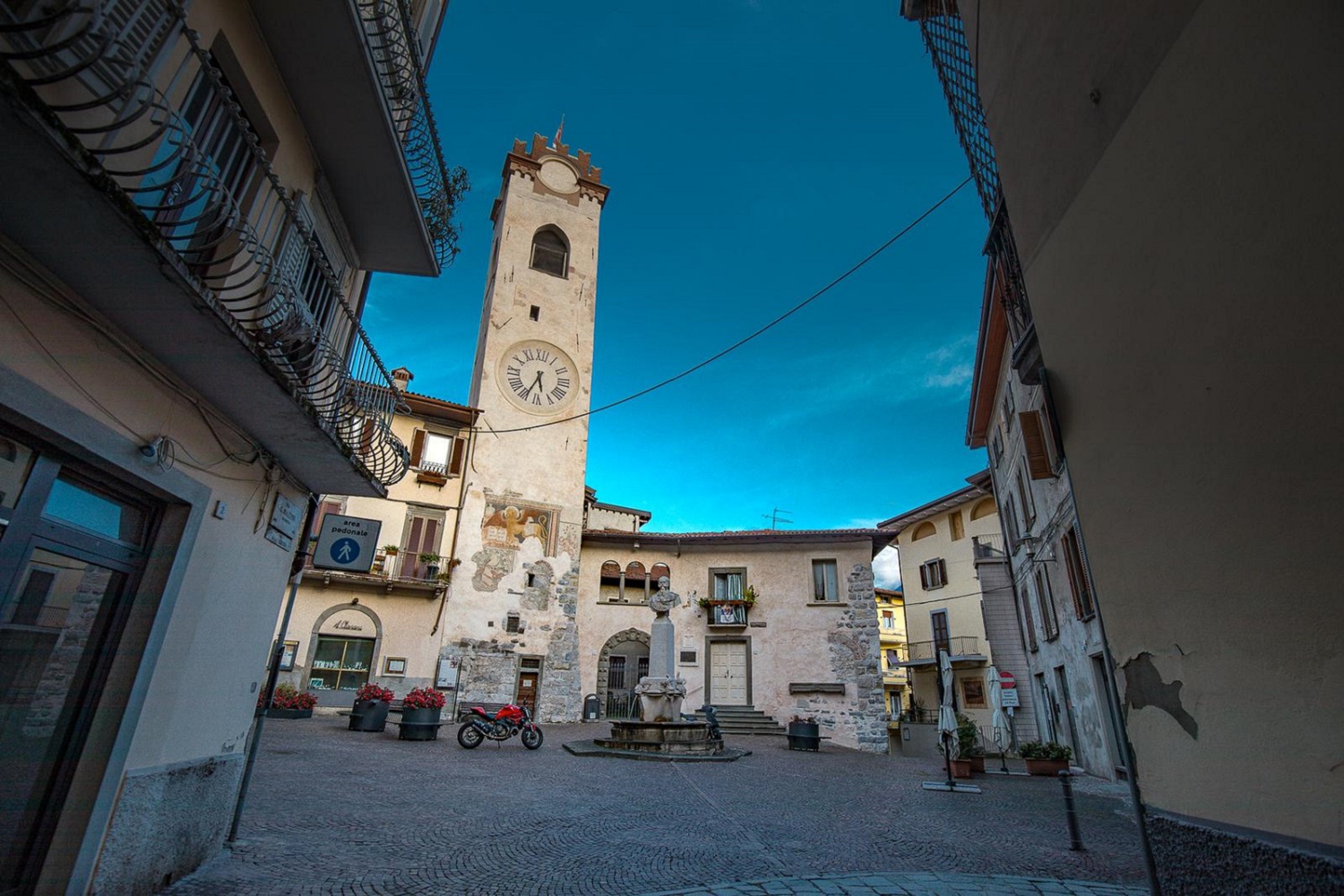
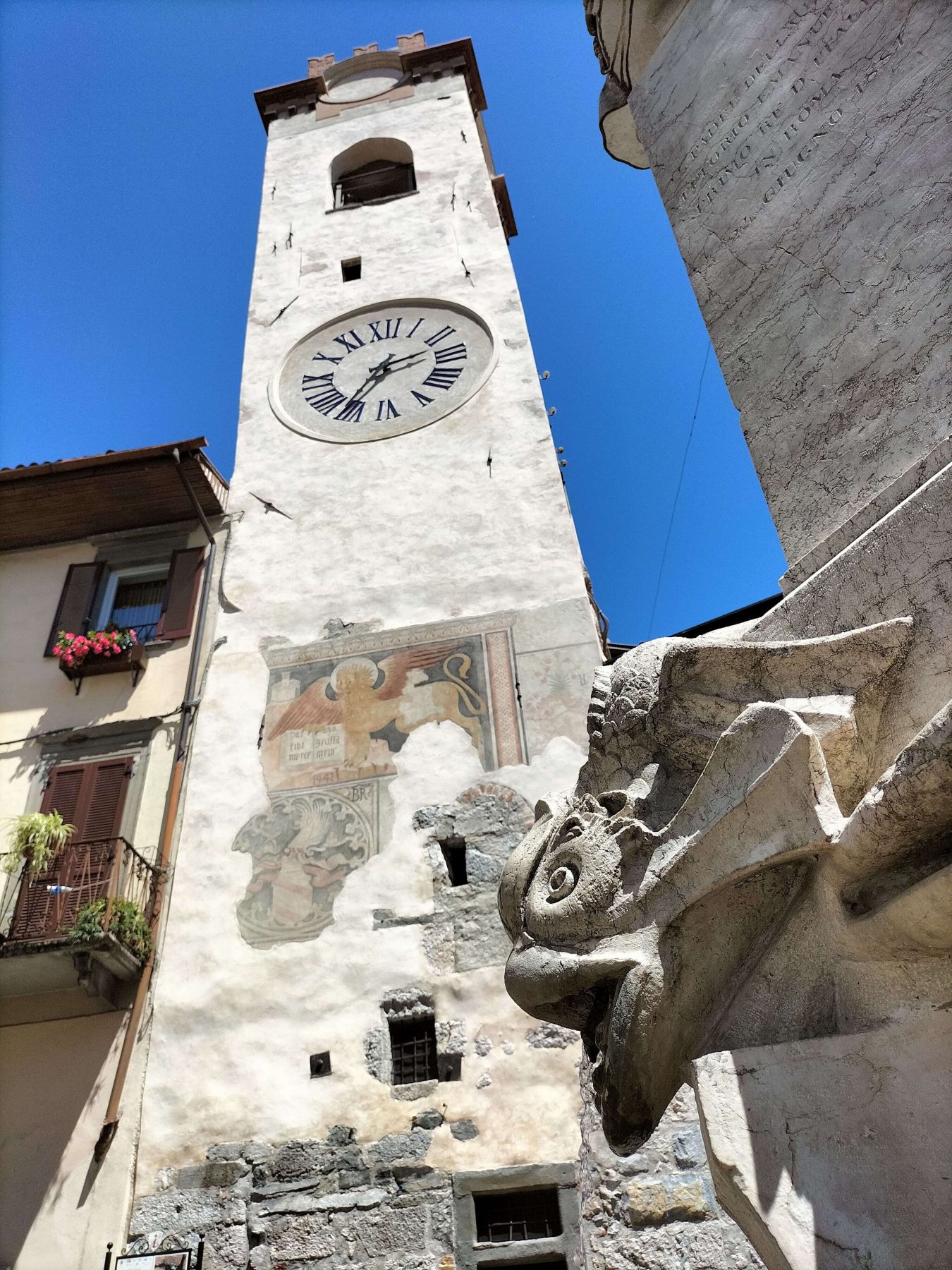
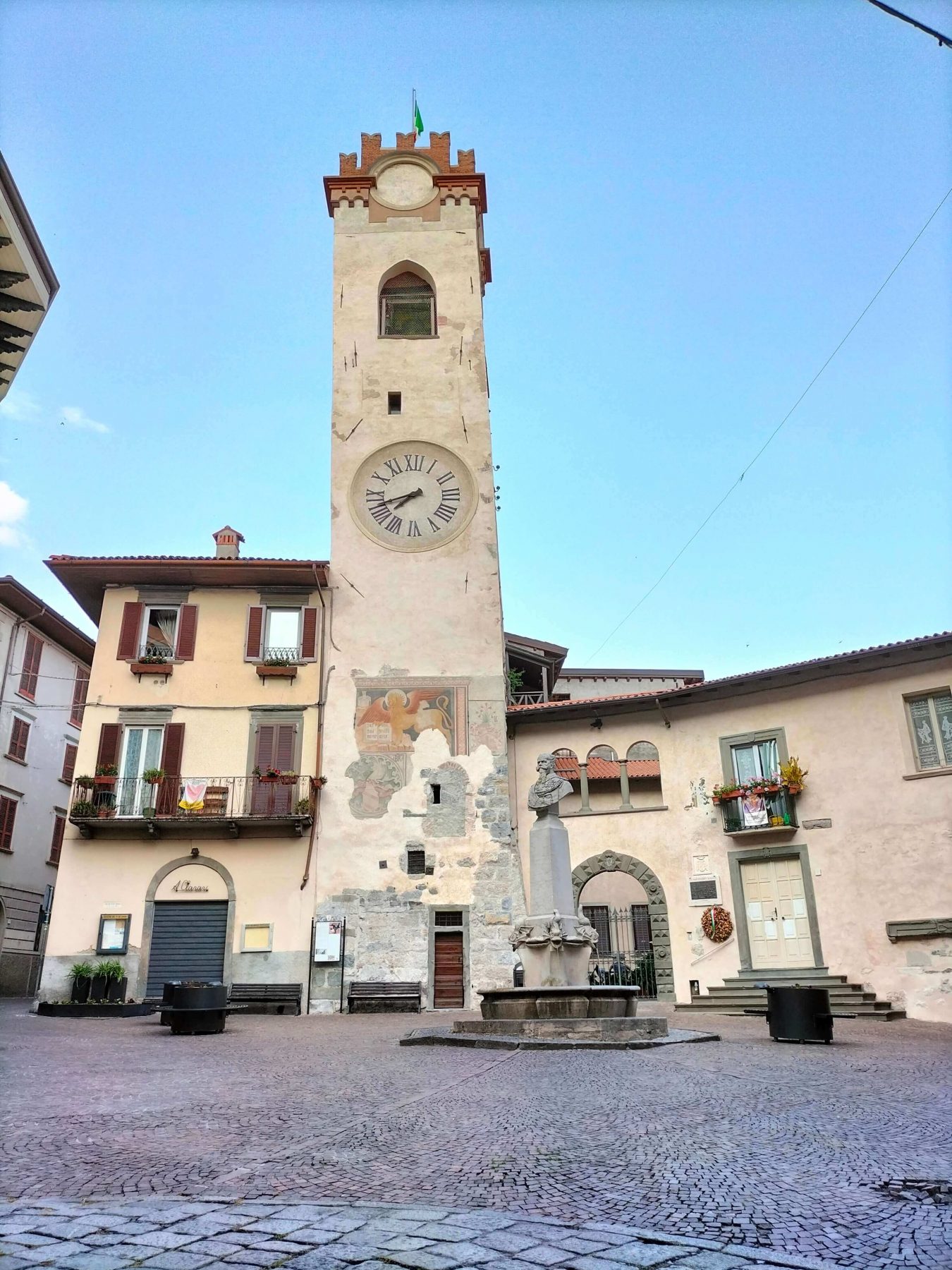
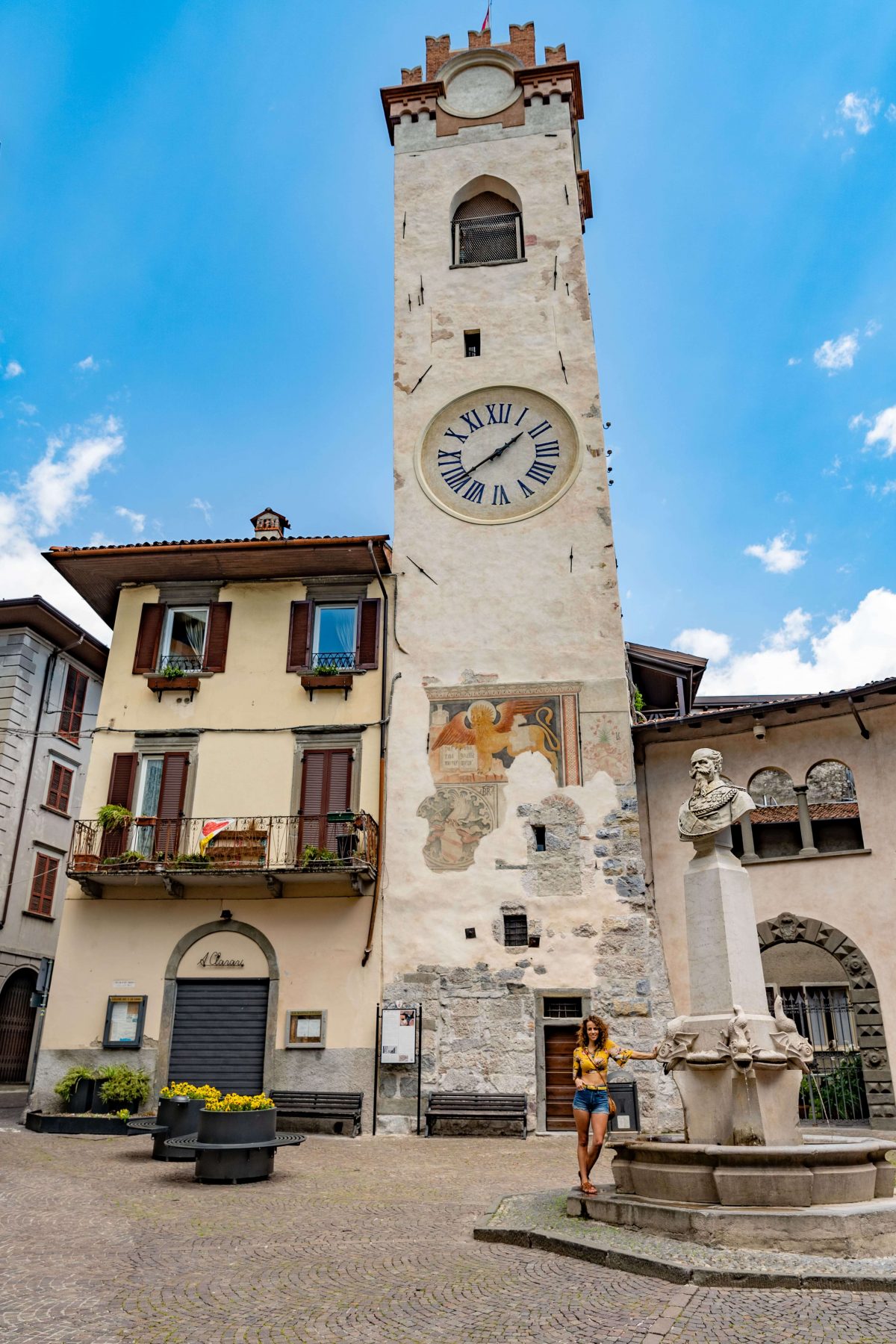
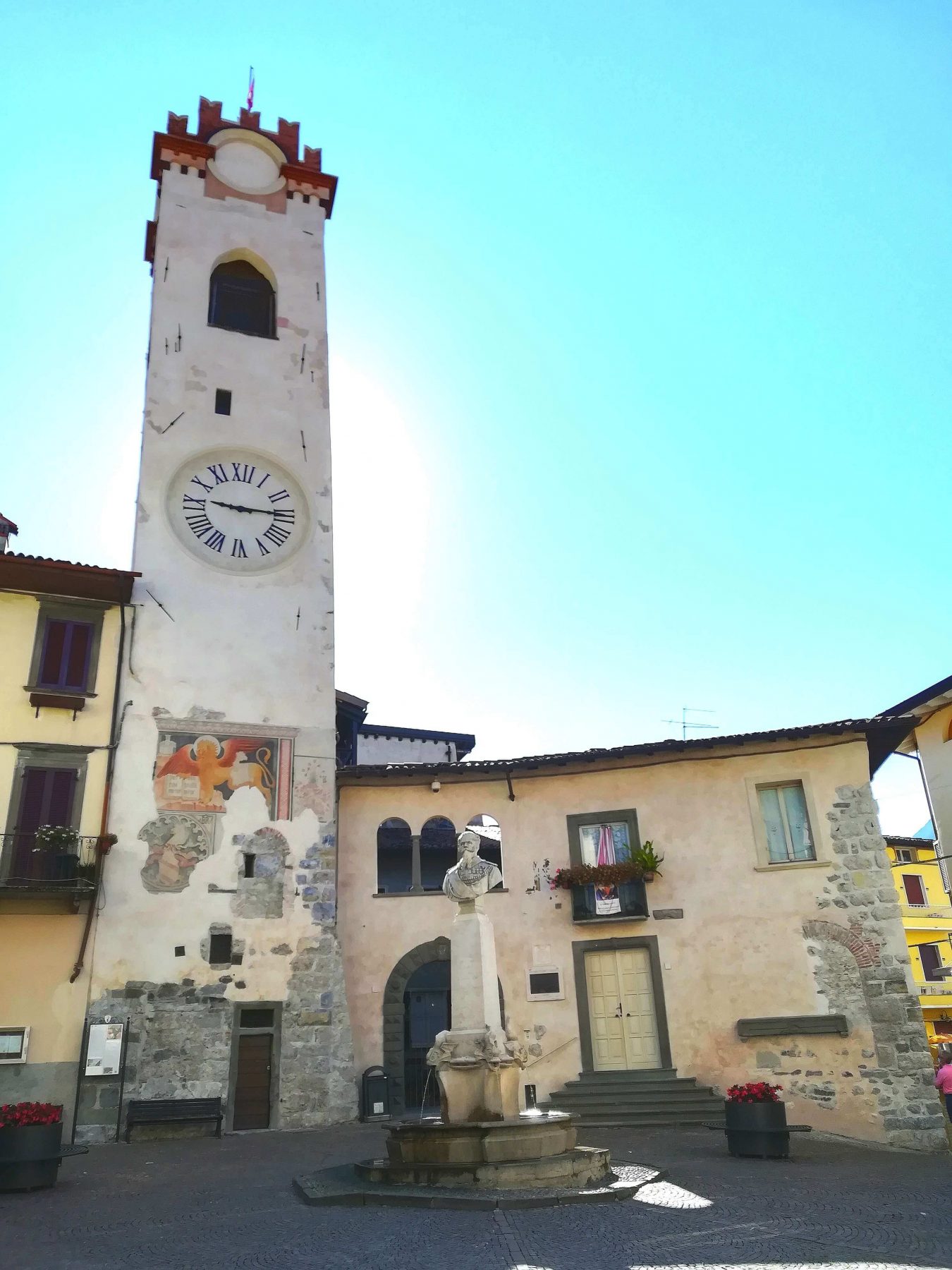
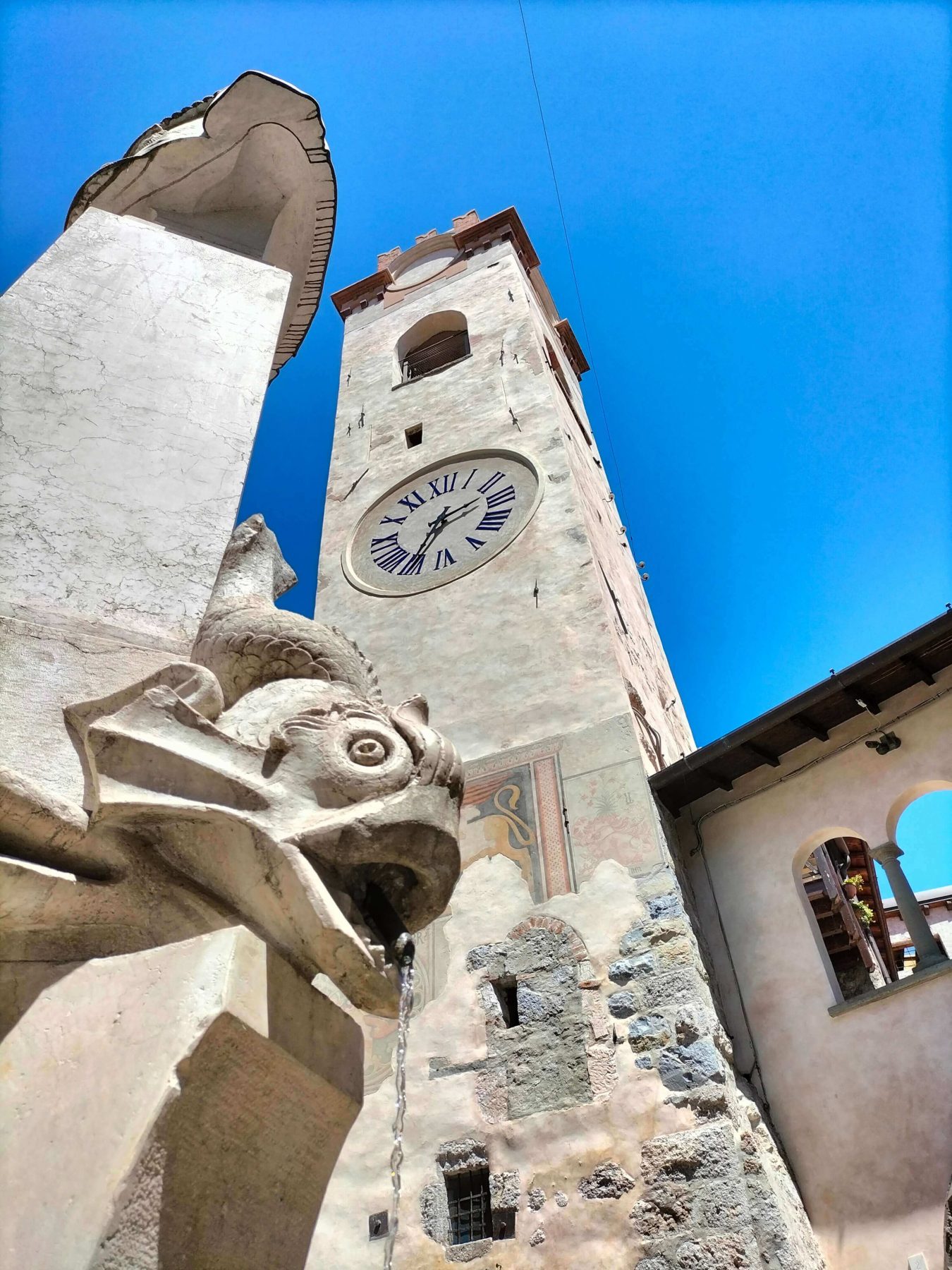
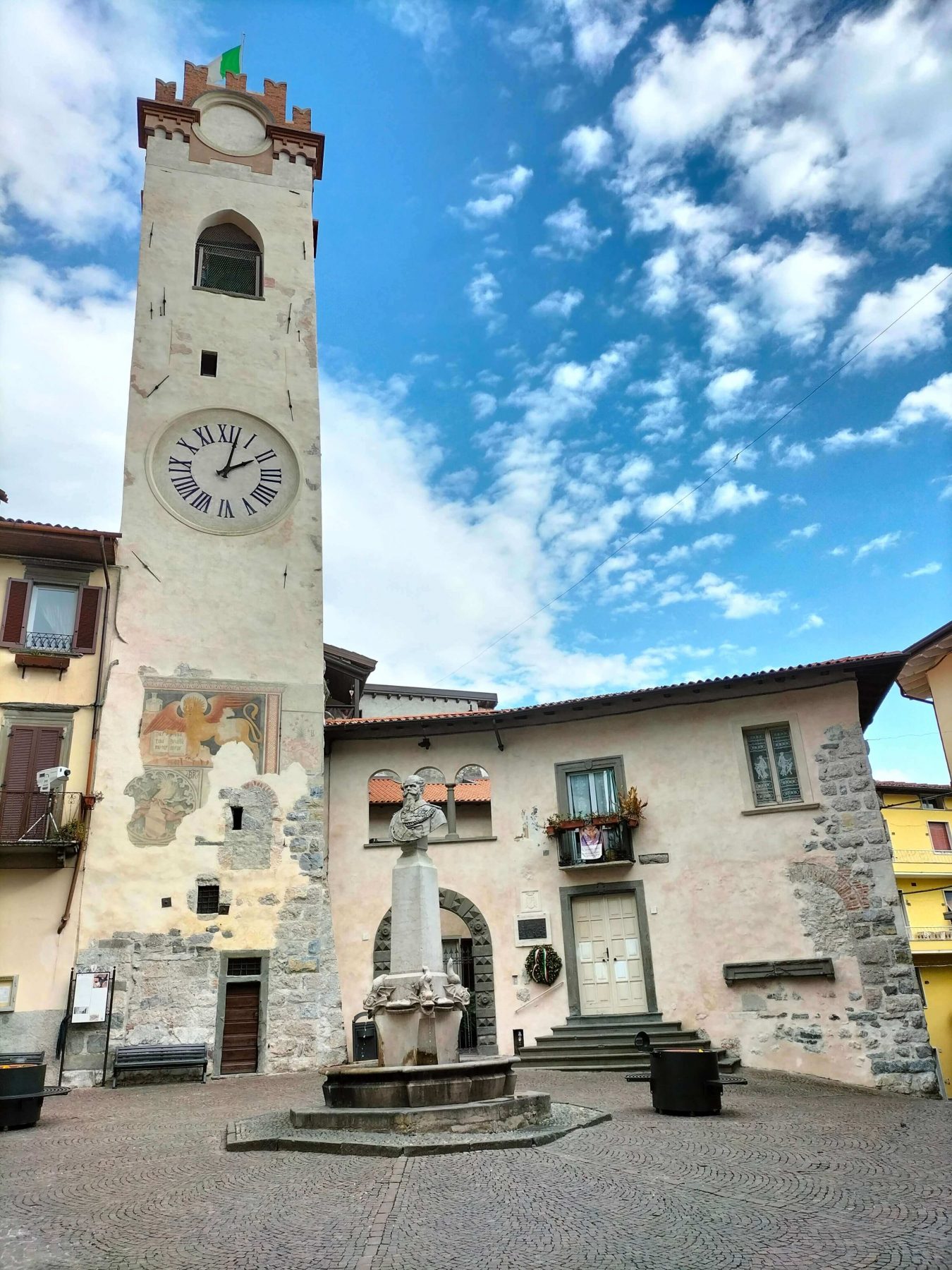
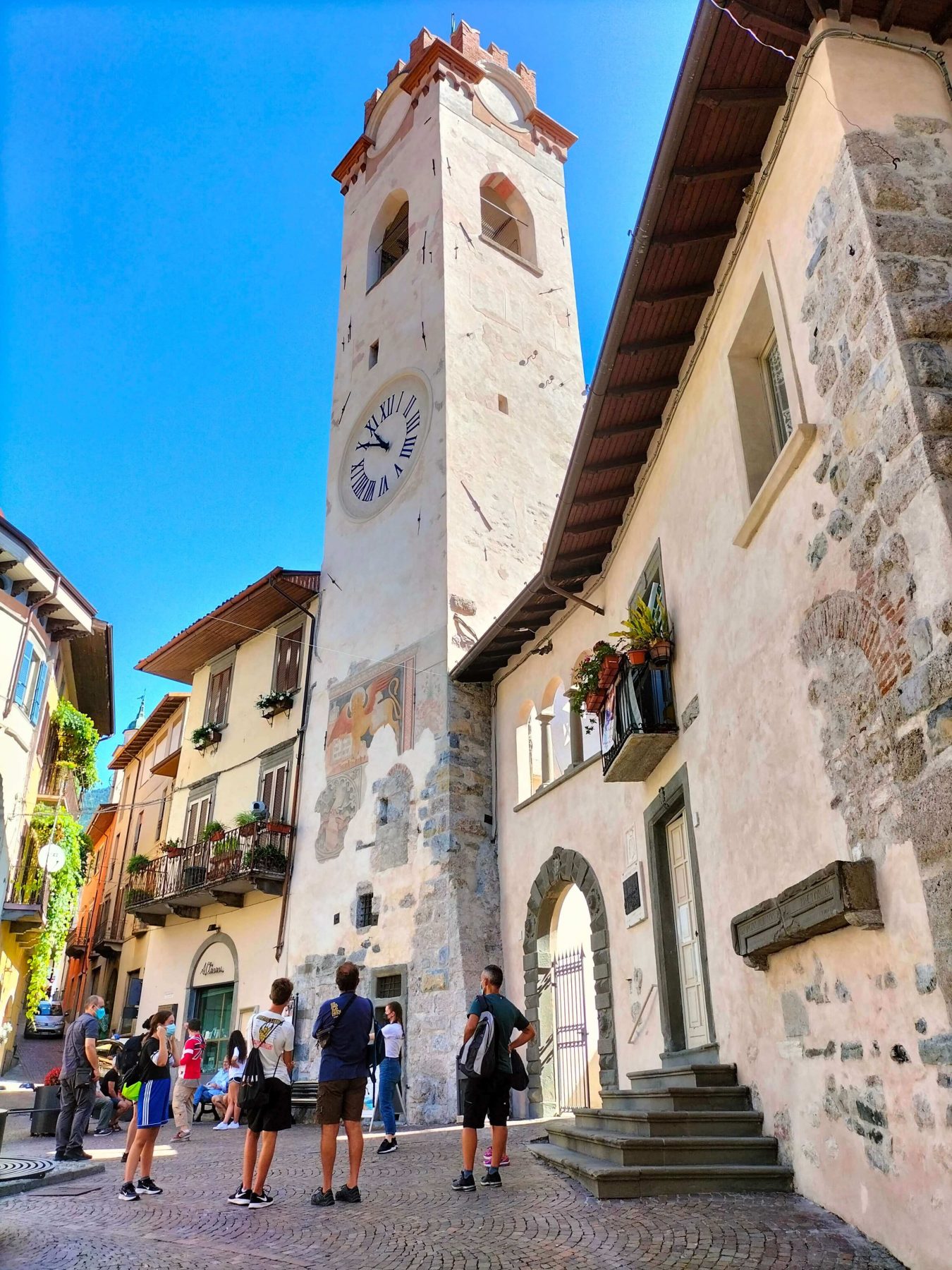
Civic Tower
In the Middle Ages the square was the centre of the inhabited area of Lovere, and all the narrow streets of the town converged there. It was characterised by the Podestà Palace, the Civic Tower and public buildings of medieval origin which for hundreds of years housed the seat of the Comune, the courts and the prison. It was also the centre of various notarial activities, the pillory was located in the square, and court sentences (also death sentences) were carried out there. In addition it was the centre of flourishing trading, in particular for substances connected with the production of woollen cloth, an activity which Lovere excelled in during the Renaissance.
The Civic Tower is about 28 metres high and has various frescoes recalling the different rulers of the town; among these frescoes is the lion of St Mark, dating from 1442, symbol of the dominion of the Republic of Venice. Climbing up the tower, visitor begins a journey through space and time to discover the 12 Hours (Ore/Ere) of Lovere, the Hours that distinguish its history and, at the top, he can admire the contemporary town.













